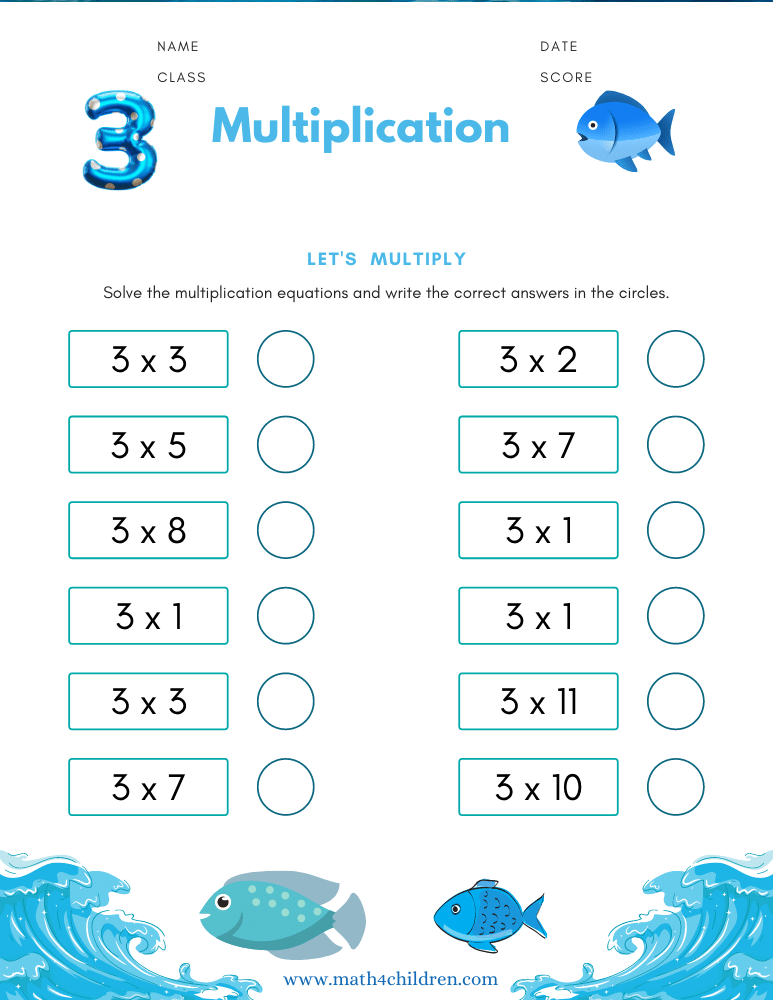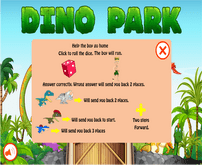Times Tables by 3: A Comprehensive Guide for Kids
As kids progress through their math classes, one of the important concepts they must master is multiplication. While it may seem daunting at first, with practice and dedication, kids can easily learn the multiplication tables. In this article, we will focus on the times tables by 3, providing a step-by-step guide for kids to master this essential mathematical concept.
Why Learn Times Tables by 3?
Before we dive into the specifics of the times tables by 3, let's first understand why it is important to learn multiplication in general. Multiplication is a fundamental concept that helps us solve real-life problems involving quantities, measurements, and more. For example, if you need to calculate how many apples you have in total when you have 3 baskets with 4 apples in each, you can simply use multiplication (3 x 4 = 12).
Basic Concepts of Multiplication
Before we jump into the times tables by 3, it's important to review some basic concepts of multiplication. Multiplication is a way of adding equal groups together. For instance, 3 x 4 means adding 3 groups of 4 together (3 + 3 + 3 + 3 = 12).
Times Tables by 3: Step-by-Step Guide
Now that we understand the basics of multiplication, let's move on to the times tables by 3. Follow these simple steps to master the times tables by 3:
Step 1: Memorize the Sequence
The first step in mastering the times tables by 3 is to memorize the sequence. The times tables by 3 include the numbers 3, 6, 9, 12, 15, 18, 21, 24, 27, 30, 33, 36, 39, 42, 45, 48, 51, 54, 57, and 60.
Step 2: Use Repetition
Once you have memorized the sequence, it's time to use repetition. Write the times tables by 3 on a piece of paper and recite them out loud. Keep practicing until you can recite them without looking at the paper.
Step 3: Use Flashcards
Another effective method for memorizing the times tables by 3 is to use flashcards. Write the multiplication problems on one side of the card and the answers on the other side. Shuffle the cards and quiz yourself until you can answer all of them correctly.
Step 4: Practice with Worksheets
Practice makes perfect, so be sure to practice the times tables by 3 with worksheets. You can find many free worksheets online, or your teacher may provide some for you. Set a goal to complete a certain number of worksheets each day until you feel comfortable with the material.
Step 5: Play Games
Finally, make learning the times tables by 3 fun by playing games. There are many games you can play with a deck of cards or a pair of dice. You can also use apps and online games to make learning more interactive and engaging.
Tips for Mastering Times Tables by 3
Here are a few additional tips to help you master the times tables by 3:
- Use visuals: Draw pictures or use manipulatives such as blocks to help visualize the multiplication problems.
- Make connections: Relate the times tables by 3 to real-life situations, such as counting by threes when you climb stairs.
- Set goals: Set achievable goals for yourself, such as memorizing one row of the times tables by 3 each day.
- Reward yourself: Celebrate your accomplishments by rewarding yourself with a treat or a fun activity.
Example of multiplication by 3
Let's say you are planning to organize a party for your friends and you want to make sure there is enough food for everyone. You decide to make cupcakes as one of the desserts, and you know that each batch of cupcakes makes 12 cupcakes.
To calculate how many cupcakes you will need to make for the party, you first need to know how many people are coming. You have invited 15 people to the party, so you need to make sure you have enough cupcakes for everyone.
To figure out how many batches of cupcakes you will need to make, you can use multiplication by 3. Since each batch makes 12 cupcakes, you can multiply 15 (the number of guests) by 3 to get the total number of cupcakes you will need. So, 15 x 3 = 45.
Therefore, you will need to make 45 cupcakes for the party. To make sure you have enough ingredients, you can use multiplication by 3 again. If each batch requires 1 cup of flour, you can multiply that by 3 to find out how many cups of flour you will need for 3 batches of cupcakes. So, 1 x 3 = 3. Therefore, you will need 3 cups of flour to make 3 batches of cupcakes.
By using multiplication by 3, you can quickly and easily calculate how many cupcakes you need to make for your party and how much of each ingredient you will need.
Conclusion
In conclusion, mastering the times tables by 3 is an important skill for kids to develop as it forms the foundation for advanced math concepts in the future. Through consistent practice and repetition, children can become fluent in multiplication and gain confidence in their mathematical abilities. With the help of various strategies and tips outlined in this comprehensive guide, kids can make learning times tables by 3 a fun and engaging experience. As parents and educators, it is our responsibility to encourage and support children in their journey towards mastering this important skill, and to make sure that they have the necessary resources and tools to succeed. By instilling a love for math and a passion for learning, we can help our children become successful problem solvers and critical thinkers who are well-prepared for whatever challenges lie ahead.












